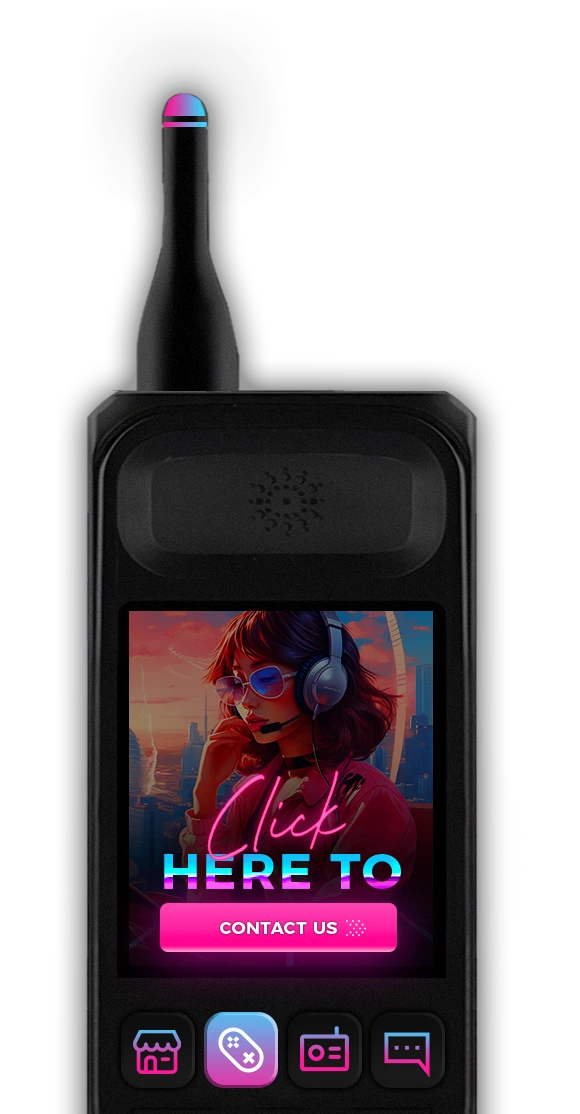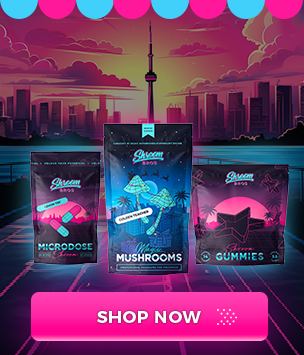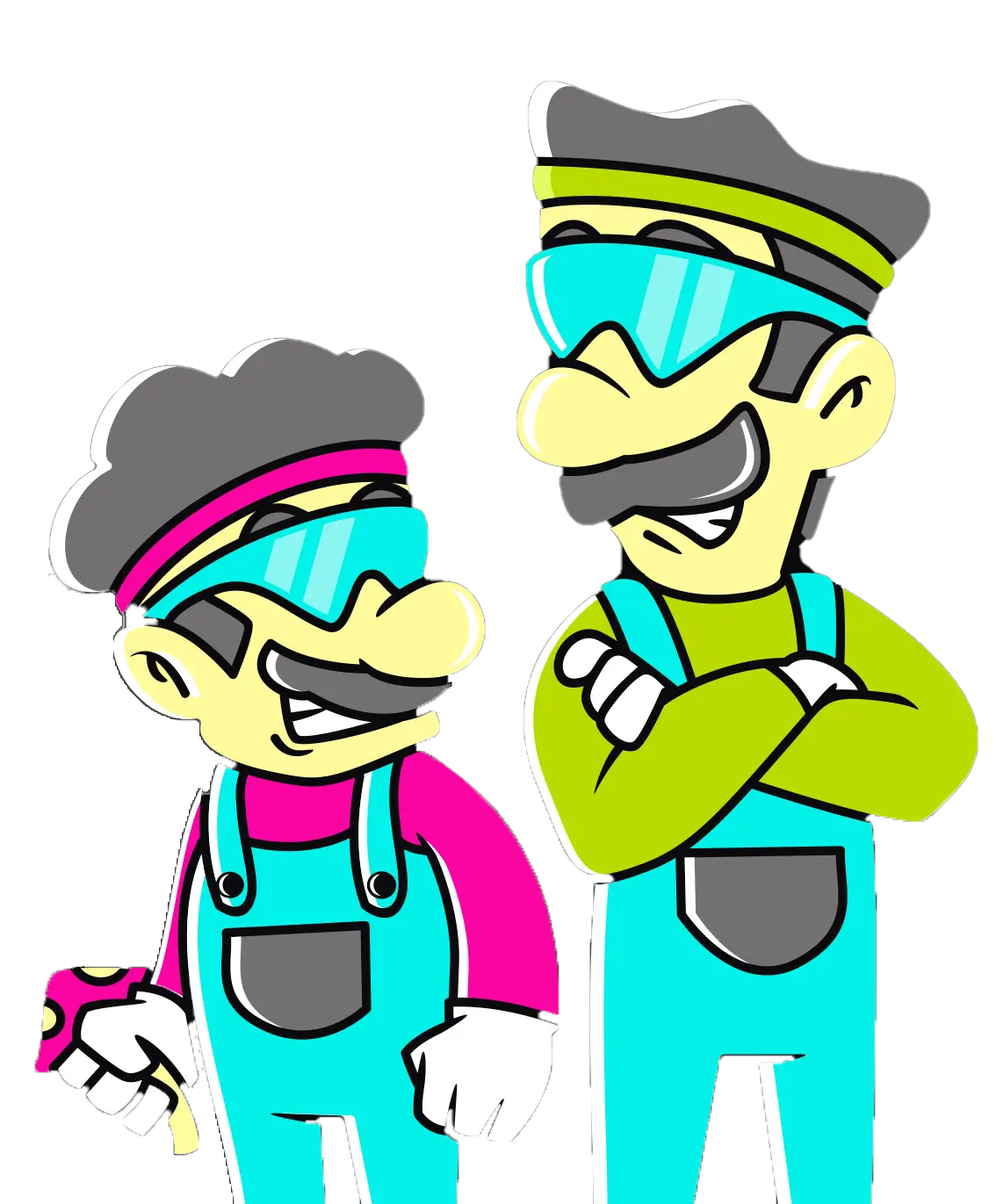Answered on this page:
- What is Microdosing?
- Can Microdosing Help My Mental Health?
- What are the Benefits of Microdosing Mushrooms?
- What is the History of Mushroom Microdosing?
- Is it Safe to Microdose Mushrooms?
History of Microdosing: Possible Origins

As with much related to the history of psilocybin mushrooms, our records give us a piece of the picture when it comes to microdosing, but not the whole thing. Throughout the 1960s, the great American ethnobotanist and psychonaut, Terence McKenna, began documenting the cultural history of the usage of psychedelics (and especially psilocybin), in many different cultures around the world; especially throughout Nepal and the Southern Amazon.
His interests grew over time as he began experimenting with psychedelics more himself. He was a key public advocate for psychedelics while they experienced their first surge in popularity in America and Canada through the 1960s and 70s. McKenna, among many other things, was the first person to propose what has come to be known as the “Stoned Ape” theory, positing that the evolution from homo erectus to homo sapien has primarily to do with the introduction of psilocybin to their diet.
His theory goes that, around 100,000 BCE, during Africa’s great desertification, our ancestors would have been driven from the lush, tropical canopies into the harsher and dryer desert climate, with significantly scarcer food. At this point, humanity began following and hunting the massive herds of cattle that roamed the continent at that time. As a result, he explains, humans would have spent a lot of time around cow dung, in which psilocybin mushrooms were first found growing. It’s doubtless that these mushrooms, and the insects who fed on them, would have formed a part of our ancestor’s diets.
McKenna thought that these mushrooms, when consumed fresh and in small doses, could have provided increased mental and visual acuity. This could have made the people who first started consuming the mushrooms better hunters, and eventually over time as they consumed more and accessed higher levels of altered consciousness, helped plant the seeds of language, music, and culture. The link between psilocybin and visual cognitive processing has later been explored, such as by Richard M. Hill and Roland Fischer in a 1971 study, which found that psilocybin significantly lowered human spatial distortion thresholds (i.e. made us more sensitive to smaller shifts in our visual field. .)
So, if this theory has any purchase whatsoever, then the human species has been benefiting from microdosing psilocybin since before the human species was the human species.
Dr. James Fadiman – The Godfather of Modern Microdosing
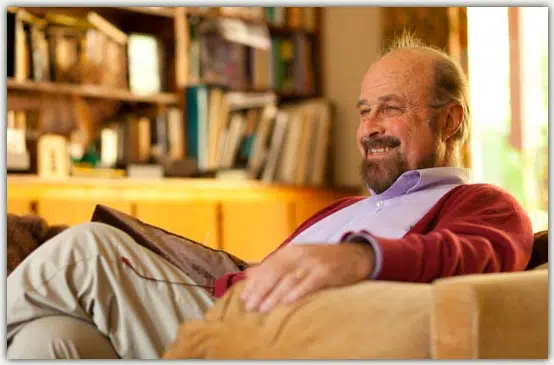
Not many people are aware that much of the modern buzz around psychedelic microdosing can be traced back to one man: Dr. James Fadiman. Fadiman was born to a Jewish family in New York, and grew up in Bel Air, California. After completing his Bachelor of Arts at Harvard, Fadiman spent the summer in Paris, where his former undergraduate advisor, Ram Dass, introduced him to psychedelics vis a vis psilocybin mushrooms. After being blown away by this experience, he accompanied Dass along with Timothy Leary and Aldous Huxley to the 14th Annual Congress of Applied Psychology in Coppenhagan, Denmark, where there would be a panel on the possible uses of psychedelic drugs. These experiences would prove to provide defining guidance for the rest of Fadiman’s life and work, as he later returned to Stanford, CA to pursue his Master’s and PhD in psychology, with a focus on psychedelics.
Fadiman was one of the first academics to notice and zero in on the potential of what he called “sub-perceptual dosing” of psychedelics – a different term for what we know as microdosing today. In 1966, Fadiman was a part of the research team working on the psychedelics in problem-solving experiment at the International Foundation for Advanced Study in Menlo Park, CA. The experiment aimed to substantiate the hypothesis that microdosing psychedelics could help professionals with solving problems. Initial results from these trials were encouraging, but the research was unfortunately cut short one morning in the summer of 1966, when Fadiman and his team received a letter from the US Food and Drug Administration, pulling the plug on the project. The FDA declared a moratorium on all research into psychedelics using human participants as a tactic to combat illicit use.
Fadiman was crushed, but he and his team were forced to move forward with the results that they had. A total of 22 subjects had been dosed through their experiments – all of them scientists, engineers, and mathematicians. Since they were no longer allowed to dose new participants, all they had left to do was conduct their 6-month follow-up interviews with the people they’d already worked with. Every single one reported lasting effects that helped them in solve problems that seemed at the time otherwise intractable. The list of innovations they credited as having come from a single psychedelic experience included: a mathematical theorem for NOR gate circuits, a conceptual model of a photon, a linear electron accelerator beam-steering device, a new design for the vibratory microtome, a technical improvement of the magnetic tape recorder, blueprints for a private residency and an arts-and-crafts shopping plaza, and a space probe experiment designed to measure solar properties.
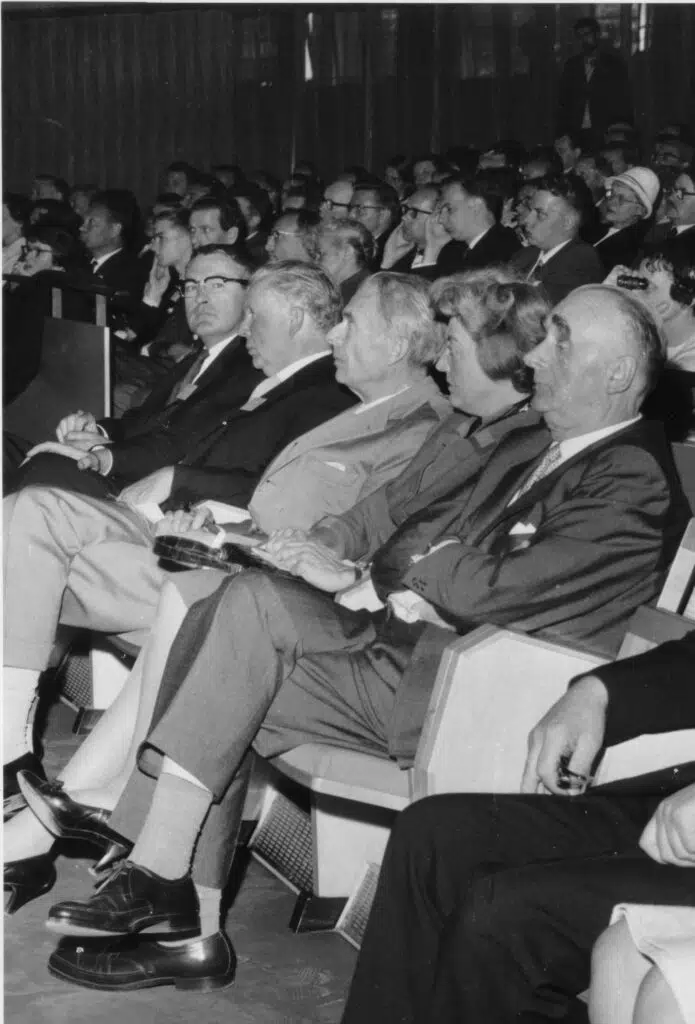
Fadiman, then aged 27, knew that he was onto something major, and resolved to continue exploring the benefits of psychedelics, regardless of what the FDA had to say about it. Of course, he couldn’t keep doing so out in the open – he had to come up with a new strategy. He knew that there were still ways for people to buy magic mushrooms, LSD, and other psychedelics on the black market. And so, Fadiman founded the Institute for Transpersonal Psychology, a non-profit organization through which he provided advice to those who had access to their own psychedelics, and wanted to know how they should approach using them. He also solicited and collected anecdotal reports from 100s of people starting in the early 1970s, and continuing for 40 years before he published a summary of his findings from these reports in his 2011 masterpiece, The Psychedelic Explorer’s Guide.
The book detailed the experiences of many people, with a specific emphasis on those in academia, technical STEM professionals, and creative professionals. Part of what he emphasizes in this book is the nearly universal acclaim for the benefits of microdosing. The book accumulated a bit of a cult following – especially in the burgeoning tech scene in San Francisco, where the term ‘microdosing’ and its popular use exploded, soon spreading to many other corners of the Western world. And so, the microdosing renaissance began to bloom. I’ll share the highlights from a few stories of people advocating for the benefits of microdosing:
Stories from Microdosing Enthusiasts
Stephen Gray, a self-described “lifelong student, teacher, and researcher of spiritual paths,” is an ardent advocate for the benefits of low-dose psilocybin, and in correspondence with Fadiman during the late 90s had this to say:
“It’s well known to the experienced that medium to high doses of psilocybin mushrooms… can provoke experiences of stunning insight, visions of great beauty, an abundance of love, and authentic mystical experiences…. Much less frequently discussed are the benefits of very low-dose experiences with these mushrooms.
“The result was… a subtle but noticeable sharpness of mind and emotion…. My guitar playing became more focused and agile…. I also noticed my ability to recollect lyrics was noticeably superior to my norm.
“In conjunction with the sharpness has been a softening of the heart, which helped me connect to the emotion of the songs…. I’ve noticed my mind grokked meanings that had previously eluded me.
“The mushroom appears to temporarily dismantle inhibition and hesitation to seeing things clearly and talking about personal topics straightforwardly…. I’ve had some very intimate conversations with friends where we revealed ourselves without raising defensive reactions.
“Ingesting such small doses is something most people can do safely on their own. No particular ritual is necessary to elicit beneficial effects.”
Anita, a professional model living in New York, on the habit of microdosing said,
“I took a pinch of it each day. I found that I was much more emotionally even and more able to see the world as inter-related rather than disjointed. It was a fully pleasurable experience.”
Nathan, a professional bass and guitar player, and avid surfer said,
“I took a small hit of mushroom the other day… went out surfing. It was a life-changing event. I was so much more in my body and could feel deeper into it…. What was so special is that for the past few weeks, I’ve been really down. A great long-term love relationship broke up, and I’ve been devastated. I’m still sad about it, but I now know it’s only a part of me.”
An anonymous psychedelic researcher, group leader, and writer, had this to share about his University days at the University of California in San Diego. His story is so charming, I’ve reproduced it here in full:
My introduction to psychedelics had convinced me of their value. I was taking a biology course to prepare for medical school, and we were studying the development of the chick embryo. After the first meeting of the one-quarter-long course, I realized that in order to stay alert, a tiny dose of LSD could be useful. With that in mind, I licked a small, but very potent, tablet emblazoned with the peace sign before every class. This produced a barely noticeable brightening of colors and created a generalized fascination with the course and my professor, who was otherwise uninteresting to me. Unfortunately, when finals came around, my health disintegrated and I missed the final exam. The next day I called my professor and begged for mercy. She said, “No problem, come to my lab.” “When shall we schedule this?” She suggested immediately. With some dismay, I agreed that I would meet her within an hour. I reached into the freezer and licked the almost exhausted fragment of the tablet I had used for class. I decided that there was so little left I might as well swallow it all.
At the lab my professor suggested that, since it was such an amazing day, perhaps I could take the exam outside in the wetland wilderness reserve that surrounded the lab. The view of the swamp was stunning! Somehow it had never seemed beautiful to me before. She asked that I take my notebook and pencil out. “Please draw for me the complete development of the chick from fertilization to hatching. That is the only question.” I gasped, “But that is the entire course!” “Yes, I suppose it is, but make-up exams are supposed to be harder than the original, aren’t they?” I couldn’t imagine being able to regurgitate the entire course. As I sat there despondently, I closed my eyes and was flooded with grief. Then I noticed that my inner visual field was undulating like a blanket that was being shaken at one end. I began to see a movie of fertilization! When I opened my eyes a few minutes later, I realized that the movie could be run forward and back and was clear as a bell in my mind’s eye, even with my physical eyes open. Hesitantly, I drew the formation of the blastula, a hollow ball of cells that develops out of the zygote (fertilized egg). As I carefully drew frame after frame of my inner movie, it was her turn to gape! The tiny heart blossomed. The formation of the notochord, the neural groove, and the beginnings of the nervous system were flowing out of my enhanced imagery and onto the pages. A stupendous event—the animated wonder of embryonic growth and the differentiation of cells—continued at a rapid pace. I drew as quickly as I could. To my utter amazement, I was able to carefully and completely replicate the content of the entire course, drawing after drawing, like the frames of animation that I was seeing as a completed film! It took me about an hour and a quarter drawing as fast as I could to reproduce the twenty-one-day miracle of chick formation. Clearly impressed, my now suddenly lovely professor smiled and said, “Well, I suppose you deserve an A!” The sunlight twinkled on the water, the cattails waved in the gentle breeze, and the gentle wonder of life was everywhere.
There are millions of people in America and Canada alone who admit to having microdosed psychedelics at some point in their lives, and experienced the incredible benefits they can offer – and we all owe a debt to Fadiman for the seminal work that he conducted in the field, right under the nose of US Lawmakers.
What Drugs are Used for Microdosing?
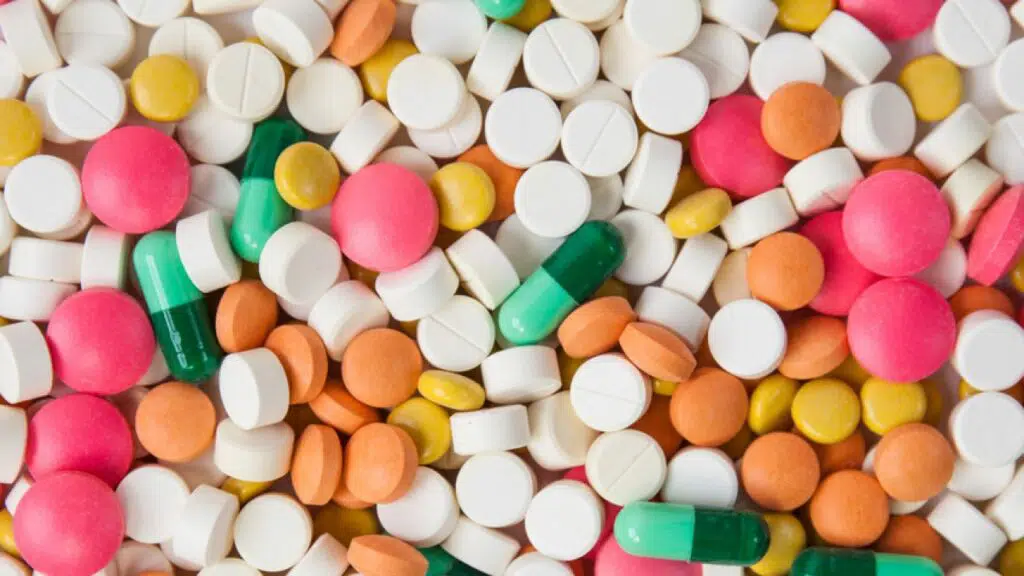
There are a wide variety of different drugs that people can and do microdose regularly. What we’ve compiled here is a list, specifically, of the 7 most commonly used drugs for microdosing.
We should emphasize that some of these drugs may be illegal where you live, and may be dangerous when taken without medical supervision. This list should not be considered a guide for using these substances, or as a recommendation – we’re just reporting what’s out there.
Psilocybin Mushrooms
Psilocybin Mushrooms are the most well-known and widely used psychedelic in the world. They are extremely popular in the microdosing community because they are all-natural, comparatively easier to find than some of the other substances on this list, and provide consistent and far-reaching benefits.
Users who microdose psilocybin often report feeling an increased sense of connectedness, sharpness, mental and visual acuity, creativity, problem-solving abilities, a higher level of engagement and interest in the world around them.
LSD
LSD (or lysergic acid diethylamide, commonly known as ‘acid,’) is, next to psilocybin, undoubtedly the most popular psychedelic drug for both mirco- and macro-dosing. LSD is a synthetic drug, first developed by the Swiss chemist, Albert Hoffman in the 1930s. From there, it found its way across the world, and has captivated the interests of researchers, psychologists, psychonauts, and recreational drug users around the world.
The LSD microdose effects are reportedly similar to those of psilocybin, however it is commonly reported that there is a kind of “buzz” of energy accompanying the LSD micro, somewhat like a caffeine high. This can be contrasted with the more mellow effects of the mushroom microdose.
Cannabis
Known by a wide variety of names (marijuana, weed, etc.), cannabis is one of the most popular drugs across the world. Derived from the buds of the cannabis plant, it is commonly smoked, vaporized, processed into extracts, eaten, and consumed in a wide variety of different ways.
People who microdose cannabis report that they often do so for pain alleviation from things like inflammation, or sore muscles after working out. Some users also report it helping them deal with anxiety in social situations.
DMT
N,N-Dimethyltryptamine (commonly known as DMT), is well-known in psychonautic circles, but enjoys a little less mainstream acclaim than any of the previously-mentioned substances. Recently, DMT has been brought into the limelight a little bit by celebrities like Joe Rogan and Mike Tyson, who speak effusively about its incredible benefits. Most of the people who use DMT look for the “breakthrough” experiences that can happen with a macrodose, but there’s a growing contingent of people having great experiences microdosing as well.
The DMT microdose experience is less well-documented than psilocybin and LSD, but one study conducted by Lindsay P. Cameron, Charlie J. Benson, Brian C. DeFelice, Oliver Fiehn, and David E. Olson out of the Univesity of California Department of Chemistry found that “chronic, intermittent, low dosing” of DMT (aka microdosing) resulted in anti-depressive changes, as well as alleviation from fear and anxiety, providing some preliminary evidence that DMT microdosing might be helpful in the treatment of certain mood disorders.
Ayahuasca
Ayahuasca is an umbrella term that refers to a range of different herbal brews traditionally used in shamanistic practices in South America, especially in Peru. What all of the brews have in common is the inclusion of plants that contain DMT in their molecular structure.
Ayahuasca microdosing is not extremely common, but some users have commented that it provided them with an increased feeling of openness and spiritual connectedness, but also cautioned that it made them feel more passive and lazy, and it was not well-suited to getting work done.
Iboga
Tabernanthe iboga, often simply referred to as “iboga,” is a shrub native to Gabon, in the Democratic Republic of Congo, but now actively cultivated across West Africa. It is an extremely potent hallucinogen, and one of the rare few psychedelics with known fatalities associated with its use – we thus prescribe extreme caution to anyone considering experimenting with it.
Iboga microdosing has anecdotally been reported to be incredibly effective in the treatment of addictions and certain compulsive behaviors. Compared with other psychedelics there is comparatively little research available on the plant, and we again recommend proceeding with extreme caution.
Ketamine
Ketamine is pretty well-known as a recreational, “party” drug – having found its initial clinical application as an anaesthetic and tranquilizer. It was noted by many users that when ingested, it can produce euphoric, psychedelic, trance-like states, and became popular for that reason.
In recent years, research has been conducted into the potential efficacy of ketamine as a treatment option for people suffering with depression. And anecdotally, users have reported some effectiveness in using ketamine as a way to help manage anxiety, depression, PTSD, and other related mood disorders.
Reddit and Microdosing – A Deep Dive into r/microdosing
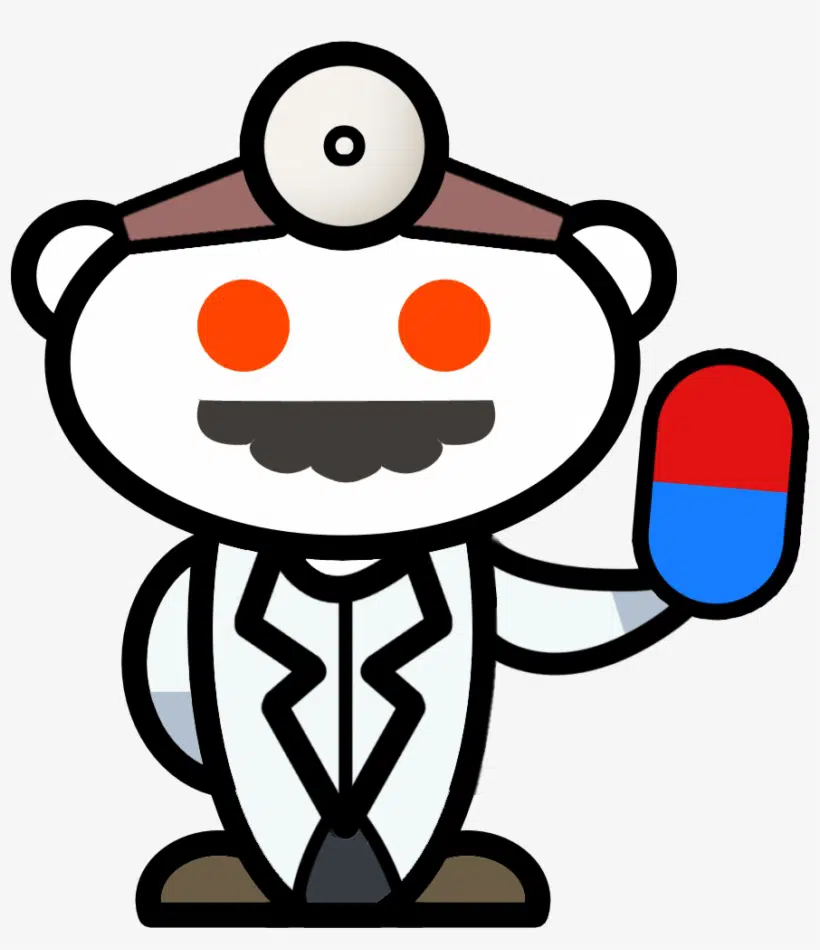
In October of 2019, a research team out of the German Institute for Addiction and Prevention Research, Catholic University of Applied Sciences in Cologne, Germany consisting of Toby Lea, Nicole Amada & Henrik Jungaberle published a paper titled Psychedelic Microdosing: A Subreddit Analysis in which they analyzed the content of the microdosing forum on the popular internet site, Reddit. They wanted to understand more about the motivations, dosing practices, perceived benefits and limitations of microdosing, as self-reported by the users of the forum.
They analyzed all the threads on the r/microdosing subreddit posted between January 26 and March 14 of 2018 – in total, 174 relevant threads were studied – focusing specifically on psilocybin and LSD microdosing.
On the motivations behind microdosing, they found extremely strong trends and were able to lump them all into three distinct categories that would cover why people might be interested in microdosing.
Why Are People Microdosing?
1. Self-management of mental health issues – by far the most commonly represented, consisting primarily of people seeking alternatives to conventional pharmaceuticals as a way of providing self-managed maintenance therapy, especially for depression- and anxeity-related mental health issues.
2. Improving psycho-social wellbeing, the second-most common named motivation, these users were seeking a range of goals including self-acceptance, establishing greater meaning and purpose in life, aligning work and study with life goals, and cultivating more trusting and connected interpersonal relationships.
3. Enhancing cognitive performance – the third most common category consisted of people seeking to improve their focus, productivity, and stamina while working or studying, while a smaller number were microdosing to enhance creativity and problem-solving.
The benefits as self-reported by these users were separated into 7 distinct categories.
The Benefits of Microdosing
1. Cognitive and creative enhancement – some posters reported that absorbing new information and generating new ideas became “effortless”, without over-analysis, procrastination, and anxiety that could often characterize intellectual and creative tasks when not microdosing. Posters reported experiencing increased motivation and clarity in thinking, with which they were able to more effectively prioritize tasks both in and outside of work, and identify “time-wasting” activities. While most posters reported these effects in reference to days that they microdosed, some posters reported that the effects “do seem to carry over into the following days”
2. Reduced depression and anxiety – Microdosing was typically perceived as more effective than psychiatric medications in providing relief from mental health symptoms, and that the effects were experienced very quickly, often within one hour of microdosing. Many posters reported that they felt “normal” for the first time in many years, something that they did not experience with psychiatric medications. Microdosing had had a profound impact on some posters, who described it as “life-changing” and a “lifesaver”. Posters who were microdosing for anxiety reported feeling calmer, more present and able to face situations that would normally be anxiety-provoking, without getting stuck in a cycle of worry and inertia
3. Enhanced self-insight and mindfulness – posters reported reflecting on their life circumstances and identifying areas of discontentment, reasons for this discontentment and strategies to affect change. Similar to those who microdosed for cognitive enhancement, these posters reported a clarity in thinking and breaking down of cognitive barriers, which opened up new ways of thinking about personal problems. For posters who reported mental health conditions, many noted that microdosing had offered resolution or new pathways to healing that had been unattainable using conventional medications. One contributor noted that “it has really helped having a therapist who is on board” and supportive of their microdosing in order to process new insights and emotions in a therapeutic setting. Many posters, including those with and without mental health conditions, reported that microdosing lifted their mood and imbued a brightness and enthusiasm to everyday activities that peaked on microdosing days but also carried over into subsequent days. Some posters said that microdosing gave a “perceptual enhancement of all you do” alongside a sense of mindfulness and connection, so senses and emotions were experienced more fully.
4. Improved mood and attitude toward life – Many posters, including those with and without mental health conditions, reported that microdosing lifted their mood and imbued a brightness and enthusiasm to everyday activities that peaked on microdosing days but also carried over into subsequent days. Some posters said that microdosing gave a “perceptual enhancement of all you do” alongside a sense of mindfulness and connection, so senses and emotions were experienced more fully.
5. Improved habits and health behaviours – Many posters reported that since commencing microdosing they had changed habits and behaviors they were unhappy with and adopted more beneficial practices (e.g., healthier diet; weight loss; exercise and gym; ceasing or reducing substance use; improving sleep patterns; financial management). Posters typically reported that it was their efforts that would “foster new habits and break old ones” but that microdosing helped them to “stay motivated and on track.”
6. Improved social interactions and interpersonal connections – Posters also reported improved social interactions and interpersonal connections, with most citing acute effects on microdosing days. Posters reported that while microdosing they felt more social, closer to their friends, and found it easier to converse and connect with acquaintances and new people. Some posters reported that microdosing provided relief from social anxiety, and that feelings of “inner doubt,” fear of judgment, and overanalyzing situations were replaced by feelings of self confidence, openness and acceptance.
7. Heightened sensation and perception – Posters often commented on a sensation of deeper sensory awareness. One user comments, “It’s more of a small perceptual enhancement of all you do. Food tastes better, music is slightly more enjoyable, conversations happen easier.” Another contributed, “It made me really into my body. I wanted to move, and eat, and touch and especially [have sexual intercourse]!”
The Limitations of Microdosing
The most commonly reported challenges when it came to microdosing had to do with dosage issues. This is a recurring theme in a lot of the literature that exists around microdosing. Specifically, the challenge of accidentally macro-dosing.
This is an issue that can be directly avoided by working with a trusted supplier who is pre-fabricating properly dosed microdoses in a sterilized lab. For users looking to buy microdose magic mushroom capsules or magic mushroom chocolates, the team at Shroom Bros would be more than happy to help.
Some users also discussed adverse side effects experienced – typically, when the dosage was correct, these side effects were not experienced the day of microdosing, but rather on the off-days. One user complained of infrequent headaches when he first started microdosing on his off-days, although these symptoms quickly faded. Another poster commented that even though he felt incredibly sharp and capable on the days he was microdosing, the days he was off, he felt sluggish by comparison. It’s important to clarify that people’s experiences can range widely depending on a number of factors.
Can Microdosing Help Me? Insight from a Direct Survey

A study conducted by a team of researchers out of University of California in Davis, California sought to explore the issue further and was published in late 2020. These researchers solicited feedback directly through various channels from people who had experience microdosing in the past. They asked them a specific set of questions and tracked their responses. Specifically, the survey was interested in looking at the potential benefits microdosing might hold for those suffering from a variety of mental health disorders.
Participants were sought through various social media channels (e.g. Facebook, Instagram), the r/microdosing Subreddit, as well as via flyer distribution on UC Campus. In total, the survey had 2,347 participants from April through August of 2018.
Of the questions that were asked, the most important was whether or not the respondents experienced any noticeable benefits in the areas of depression, anxiety, focus, and sociability. And the answers are quite compelling.
Of all the respondents, 71.84% indicated that microdosing helped with their depression, 56.55% of people said that microdosing helped them with their anxiety, 58.97% said microdosing helped them to focus, and 66.56% of people said that microdosing helped them to become more sociable.
It’s quite an interesting result given the limited sample size, and certainly encouraging – especially given the recent buzz in the psychopharmacological community about the inefficacy of traditional prescription medications. All signs seem to be pointing to psychedelics as the next step forward in the treatment of these psychological disorders that plague so much of the population.
Also worth mentioning are the potential deterrents mentioned by the study’s participants. That is to say, what people’s reasons for choosing not to continue with microdosing.
Out of all the people surveyed, 8.23% said that the drugs were too expensive, 22.63% said that they were too hard to obtain, and 24.28% said the risk of psychedelic illegality turned them off to continuing further.
Importantly, only 4.94% of people complained that microdosing was an ineffective form of treatment, and even less people (4.14%, to be exact), complained of experiencing negative side effects – considerably less than almost any mainstream pharmaceutical.
The evidence collected up to this point continues to be largely circumstantial and anecdotal, but all signs seem to be pointing in one direction:
Microdosing is the future.
How to Microdose Mushrooms: A Practical Guide
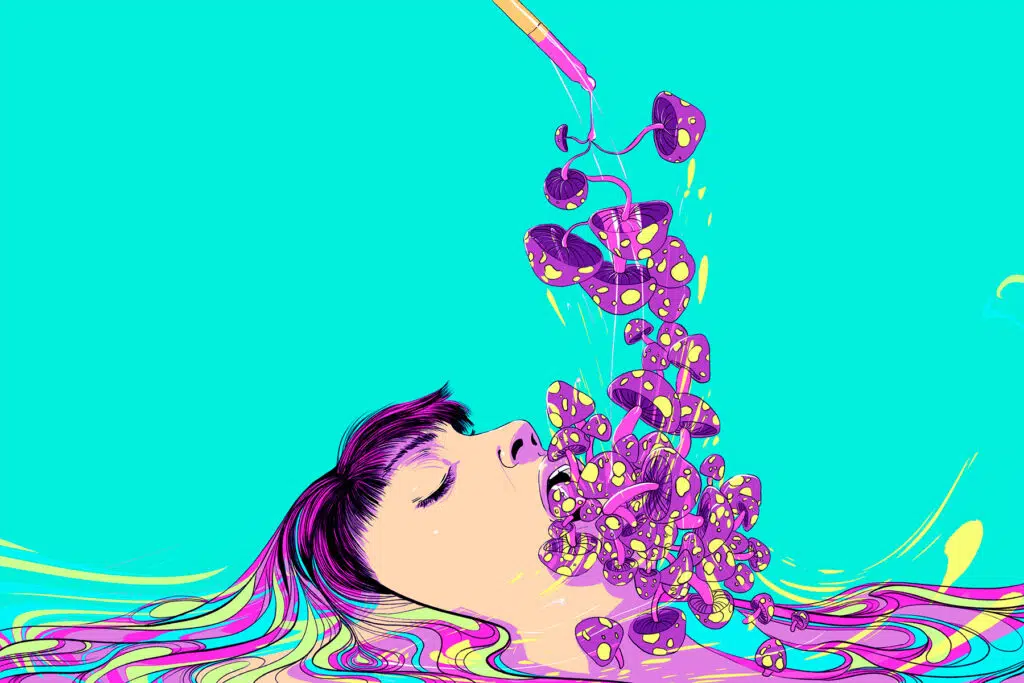
“Okay,” you might be saying. “You’ve convinced me, and I’m willing to give microdosing a try – but how do I get started?”
This is a great question, and we’ve prepared below a guide that consolidates advice we’ve cultivated as a team through our own experiences with microdosing (trust us when we say that the Shroom Bros you know and love wouldn’t exist today if it wasn’t for microdosing from the team behind it), as well as the more scientific data collected in some of the papers, articles, and books we read in researching this article.
1: Set an Intention
Before microdosing, you should be extremely clear on what the reasons behind the action are. This is true any time you’re looking to use psychedelics (whether it’s a macro- or micro-dose.) Often, this is referred to as setting intention. We have spent a lot of time in this article talking about the scientific and clinical research, but almost all experienced psychonauts, regardless of their scientific background will talk about the spiritual side of the mushroom – and how one’s experiences seem to change depending on the intentions set before going into it.
Your intention could be related to mental health – e.g. feeling less depressed or anxious, it could be looking for a boost in focus or creativity related to a project or problem you’re working on. Some people find that microdosing helps them to more smoothly navigate day-to-day interactions with other people, and generally be more sociable.
Having a clear goal set will help you to get the most out of the experience.
2: Dose Carefully
As aforementioned, one of the biggest challenges facing people who’ve tried microdosing in the past is accidentally macrodosing themselves instead. Make sure that you measure out your dosage extremely carefully. If you are working with dried shrooms, we recommend using a blender to mix the mushrooms up into a fine powder, and weighing out that powder rather than just weighing out pieces of the mushroom.
This is because psilocybin is not necessarily evenly distributed through the mushroom – blending it doesn’t 100% guarantee even distribution, but makes it much more likely that the doses will be consistent in their potency.
Of course, the easiest and most reliable thing would be to work with a product that has already been measured out carefully by professionals – for example, you could buy mushroom chocolates or microdose capsules from our store.
3: Dose Early in the Day
It is recommended that you dose earlier rather than later to experience the full potential of microdosing. Assuming you wake up at 7AM and eat breakfast at 7:30AM, a good time to dose would be 8:30 or 9. The reason for this is that you want to make sure the dose has had its time to clear your system by the time you’re going to bed on that day. You don’t want to be going to sleep while your dose is at its most active.
4: Follow a Schedule
It’s unreasonable to expect yourself to experience the full benefits of microdosing if you just do it once, or do it sporadically. Virtually everyone who talks about microdosing talks about the importance of following a schedule. The most common schedules are either one day on followed by one day off, or one day on followed by two days off, and repeated for a period of at least 2 weeks, but ideally one month or longer.
It’s important first of all not to microdose every day – an important part of the experiment is comparing how you feel on days on compared with days off. It’s also commonly reported that the effects of microdosing last around 2 days, so dosing yourself on consecutive days is somewhat redundant.
Once you’ve set the schedule and the intention, make sure you stick to it! Microdosing is all about consistency
5: Actively Reflect
Actively think about how you are feeling or performing compared to how you normally would. Many people find it helpful to keep a journal, even a brief one, to log how they felt that day. It’s useful to be able to look back, and ultimately this will be able to help you find a schedule, product, and dosage that works best for you.
6: Share Your Results
If you’re interested in experimenting with microdosing, the world is interested in hearing your results. A couple of the studies we mentioned earlier in this article looked directly to places like r/microdosing on Reddit, because the unfortunate legal status of psilocybin still inhibits direct research. So, if you have an experience – positive, negative, or neutral – consider sharing it with others, even anonymously to help us all further understand the process.
